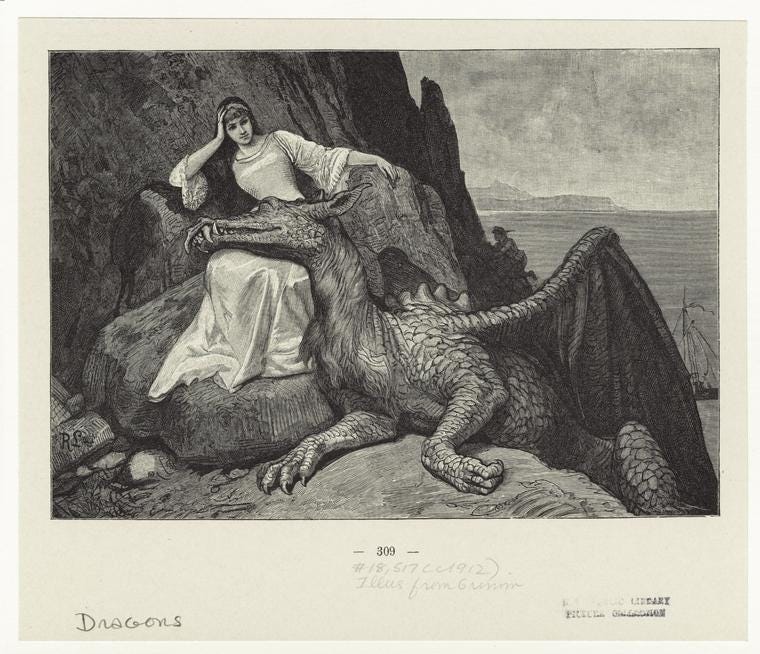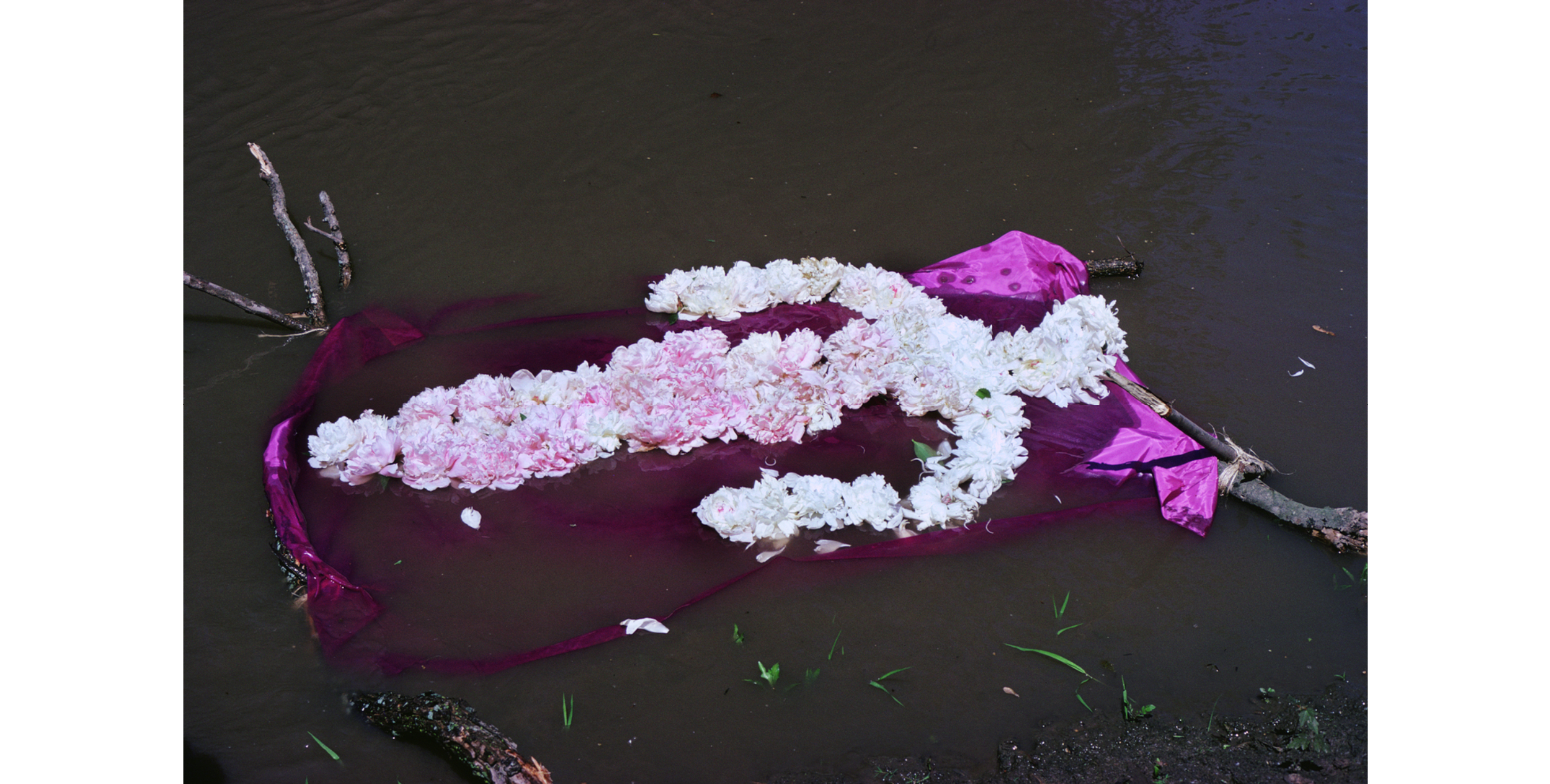
When I was in London, I bought Deborah Levy’s The Cost of Living and Celia Paul’s Letters to Gwen John. Both take up different modes of nonfiction and the autobiographical in an effort to trace their authors’ attachments to men and their subsequent efforts to build an artist’s life of their own. I love Levy’s opening sequence about a woman who learns to scuba dive, only to rise to the surface and discover that a storm has begun raging while she has been underwater, and she no longer recognises the boat to swim back to. Levy writes elegantly about the seasons of change in our life, the ways we forge ahead at making our way in unfamiliar spaces, mercurial bodies, and inconstant weather. I am only about halfway through Paul’s book, a collection of letters she has written in the present-day to the 19th-century painter Gwen John, but when I began reading it in London at the beginning of the month, I found that I was tracing circles around her as I read; since returning home, reading Paul has been like suddenly opening the lids off memories.
For my dissertation research, I read Maggie Nelson’s The Art of Cruelty last week and surprisingly, I liked it a great deal. Some of you will know that my opinion of Nelson’s work has soured in recent years: the egregious On Freedom was the tipping point, followed by re-reads of The Argonauts that have also raised my hackles (not to mention the way that this memoir by a bougie white cis-woman gets treated as the definitive text about contemporary trans and queer life). Nelson published The Art of Cruelty in 2011, predating her explosive fame, and it is a measured, well-researched, and thoughtful investigation of traumatizing or extreme art, asking what it means to witness upsetting media, performances, or events. I am especially interested in Nelson’s takedown of the argument by so many artists and thinkers (Artaud, Bacon, et al.) that violence “clarifies” or “cleanses” and is a pure force that gets to the depths of understanding—I’m inclined to agree with Nelson when she asks what kind of knowledge or understanding cruelty actually produces, and whether in fact violence really just confuses, causes chaos, and compounds on itself (as most theorists of trauma would likewise agree). When certain artists with institutional power and privilege claim to defend expressions of cruelty as philosophical or stylistic, Nelson wonders whether—here looking specifically at Lars Von Trier—the artist is in fact merely trying to “preserve his right—and the culture’s—to an entrenched, inevitable chauvinist malevolence.” Her capacity to parse the ethics of violent imagery without advocating censorship is admirable, though I am not sure how she went from this cautious and thoughtful approach to her more recent “sticks and stones can break your bones, but art can’t actually hurt you,” as in On Freedom (this may be a stretch, but is it because The Art of Cruelty largely critiques misogynist art by men, whereas On Freedom tries—and obviously fails—to defend racist art by white people?).
Mid-month, I walked to InterAccess with my friend Abby to see the installation I Want to Leave This World Behind by Stefana Fratila and Diana Lynn VanderMeulen. According to the artists, it “centers on outer space exploration, speculative-fictive realities, and Crip futurity. Considering landscape through the lens of new technologies, I want to leave this Earth behind explores the flora, fauna, sounds and textures of science-fictive and technicolour planets, while environmental characteristics like thunder and wind are spatialized to create an immersive sensory experience.” The work is best viewed lying down on the pillows provided, so that you can see as much of the 360 degree video and also fully relax into it. It was ambient and alien, fascinating and calming. I don’t know if I always get projection art, but this felt (appropriately) like being temporarily drawn into another world, and I was left thinking a lot about the power of these kinds of speculative experiences, especially when they are so deeply felt. What can it mean to suspend, even temporarily, the laws of reality, and what should we take with us from these glimpses of elsewhere?
While I was away, my friends Abby and Jess helped me acquire an Ana Mendieta exhibition catalogue that was available at TYPE. Mendieta catalogues can be hard to come by, since most of her retrospectives were in the 90s and 2000s and thus are out of print or pricey secondhand. I’ve enjoyed flipping through this one and seeing unexpected resonances between different performances and photographs. I’m also reading a lot of Mendieta scholarship for my dissertation and even though I have been a fan for many years (I made a dance film about her in undergrad <3), my sense that she was a genius is always being renewed. Amazon recently announced a true crime series about Mendieta’s
deathmurder, which I feel very uncertain about, though after listening to Season 1 of the podcast Death of An Artist, I actually think this could raise interesting questions about the canonisation of art history and the coexistence of misogyny and racism with progressive politics. It probably won’t do that, but if it has to exist, it should at least try.I went to a Charli XCX album launch party in London and got swept up in the hype, so I’ve been listening to selections from Brat on repeat: the bop “Club Classics” and of course “360” and “365”, but also the more bittersweet “So I,” are at the top of my list. I am also a longtime fan of her 2019 house tour for Nowness because I love the mix of older Tudor features with playful, creative, contemporary touches. I think about the two-story living room, dining table, and turquoise bathroom a lot. My own purchase of a silver tinsel curtain into my living room (from Dollarama) was inspired by the way her home has the feeling of a party that has either just ended or is about to begin. I’ve also been listening to a ton of Issy Wood, especially the LP My Body Your Choice.
But although I used to try and pretend otherwise, I really have no aptitude for or knowledge of music whatsoever, and so in that vein, it has been a joy to see my friend Jess arrive on Substack with her recent listening diary that I intend to soon work my way through; in the meantime, it is a pleasure to read her passionate insights.
It should come as no surprise that I am watching Julio Torres’ new HBO series Fantasmas. With only three episodes released thus far, I don’t have much to go on except that there is a performance artist character named Vanesja who started pretending to be Julio’s agent until she actually was, a quest for a tiny oyster-shaped earring, and a lot of B-plot sketches with surprising and delightful guest stars like Ziwe, Alexa Demie, Aidy Bryant, and Paul Dano.
Last summer was a bust for me (enter story about co-habitating with a wasp colony), and so I am thrilled to be planning a true summer this year, including lots of time for friendship and sweet little rituals. My friends and I have already built a comforting routine so far: we have our favourite ice cream place, favourite café, favourite park. Being in community around home has been very special, but so has the community I have encountered during my visits to the People’s Circle for Palestine, whether at workshops, clean ups, communal Shabbat (I am disappointed to have missed Eid), rallies, or otherwise. There is so much of an emphasis here on sharing, whether it be an exchange of material resources, knowledge, or culture, and this feels so rare and precious, especially with the university’s boot hanging threateningly above the camp this entire time (at the time of writing, no injunction verdict has yet been announced). I am so moved by the way that the organizers (of which I am not one) are outlining the connections between all of us and insisting on what this demands of us ethically, socially, and politically. You can find out more and support the People’s Circle for Palestine here.
I’ve just watched a screener of Lucy Kerr’s feature debut Family Portrait, which won Best Director at the 2023 Locarno Film Festival and is premiering theatrically in New York on Friday, followed by runs in Chicago and LA throughout July. The tone of this is almost catatonic (even-keeled, unflinching) on the one hand, and suspenseful, marked by a sense of foreboding, expectation, or unfulfilled urgency. I loved all of the tracking shots and the way that Kerr writes conversations between loved ones where annoyance or frustration can so subtly simmer below the surface. On the subject of summer indies, I am devastated that Annie Baker’s directorial debut Janet Planet does not seem to have found a Canadian distributor—I will be reading The Flick and her Vermont plays in its notable absence.
Articles/essays: Isabella Hammad’s “Acts of Language” on the dissonant responses to pro-Palestinian speech and anti-Palestinian violence for NYRB / The Yale Review’s new issue, which features lots of writing about the craft of criticism, including Brian Dillon’s impressive call for a criticism that does not clarify but rather unfolds in the dizziness and opacity of a work of art and Namwali Serpell (who is fast becoming one of my favourite essayists) on the orientation of criticism to self-flagellate and anxiously defend itself against neoliberalism / Selma Dabbagh’s LRB coverage of life for refugees in Gaza: “We are adapting… but as we are doing so, we are losing something beautiful in our souls.” / Elaine Scarry interviewed in The Paris Review, speaking about the overlooked political importance of imagination: “If you really want to take down someone’s, or a whole population’s, ability to think, you must do it by shutting down their practice of the fictional as well as their practice of the factual” / Sophie Lewis wrote about Bridgerton’s obsession with breeding and patrimony in Lux, describing the show as “a world where strong women make weak men into good daddies” / In The Baffler, Maya Solovej’s review of Parade, Rachel Cusk’s latest novel, which is described as a shapeshifting biography à la Orlando (though Solovej likens it moreso to “A Sketch of the Past” and emphasises Cusk’s rejection of narrative) with a section inspired by Louise Bourgeois, has convinced me that I do want to read this one.
I’ll be back soon with the rest of my travel diaries and more information about the No Outlet summer book club.






I'd like to know what your favourite park is!!